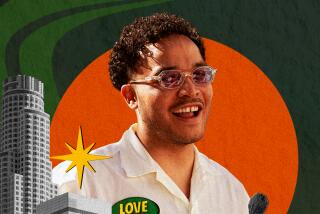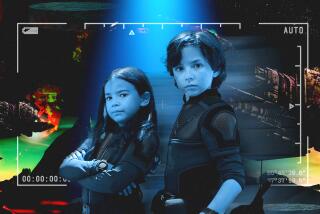At City of Children, Kids Play at Work
- Share via
MEXICO CITY — Jorge Luis Ortega slips on his police vest and hits the streets. He passes the pizza joint, the hospital, the beauty parlor. No sign of trouble.
Then he spots his man standing in front of the theater: Alejandro Luna. Ortega collars him, but Luna twirls and connects a jab to Ortega’s jaw. Ortega wrestles Luna to the ground and drags him off to jail.
“I found cocaine on him,” Ortega says nonchalantly. “Plus he resisted arrest.”
Ortega goes back out to look for more trouble. Luna, meanwhile, gets bored sitting in jail--and walks out through the rubber bars of his cell.
Ortega is 10; Luna is 11. And this is the City of Children, an amusement park where kids do everything from making the food to caring for the sick to walking a beat.
It has become wildly popular in less than a year of operation. Despite its capacity of 1,200 children a day, tickets often sell out a week in advance.
The park is a marketer’s dream. That pizza joint isn’t just a pizza joint; it’s a Domino’s. The hospital bears the name Johnson & Johnson. The beauty parlor is Pond’s Institute.
Sponsors, eager to create brand allegiance at an early age, pay 55% of the costs at the city-within-a-mall, giving its operators another stream of revenue.
The founders say they are in negotiations to expand into malls from Los Angeles to New York, from Tokyo to Buenos Aires. By next year they hope to have 10 of the parks in place. By 2004 they project the number at 50.
“It’s a very exportable concept,” says Luis Javier Larezgoiti, co-director of the park. “Children everywhere play the same game. It’s the one game you don’t have to teach them: role-playing.”
Children inside seem to agree.
“I love working here. It’s fun,” says Yvette Sierra, a 6-year-old from Orlando, Fla., spending part of her Mexico vacation as a checkout clerk at the park’s Superama supermarket.
“I’m playing as if it were real, and I’m practicing for when I’m grown up,” she says, running a bar-code reader over a bag of Chokis cookies.
Her mother, Ivette Vignau, watches her from outside, at least as thrilled as her daughter.
“The children don’t realize that they’re learning everything they’re learning,” she says. “They’re learning to administer their time, their money, everything. And it’s fun.”
Here’s how it works: Children line up at an American Airlines ticket counter at the upscale Santa Fe shopping center. For 90 pesos, or a little more than $9.50, a child gets a “ticket” to enter. The kids also get checks issued by Bital bank for 300 “pesitos”--or little pesos, which are good only inside the City of Children.
After passing through “X-ray machines,” they have to find the bank and cash their check. If they want, they can open an account, complete with an ATM card for withdrawals.
Then on to the fun. The 68,000-square-foot city is filled with stores and services. For 40 pesitos, they can rent a General Motors bumper car, fill it at the Pemex gas station and stop at the Burger King drive-through window.
For another 40, they can board the fuselage of a real American Airlines plane for a view of a miniature Mexico City, and while inside they can play a flight-simulator game.
They can go into the theater and see a show--or be in one, since most of the actors are children who rehearse for a half-hour before show time. The theater is one of the only attractions without a sponsor, and executives are negotiating with Mexico’s two main television networks.
For 40 pesitos at the Domino’s outlet, kids can pound out a crust, top it and stick it in the oven. They get to eat the fruit of their labor.
Once the pesitos run out, children go to work--earning 30 pesitos for a 10- to 15-minute shift. They can care for newborns--dolls, actually--in the hospital’s maternity ward. They can work checkout in the supermarket. They can paint nails at the beauty salon. They can sign on as a cop.
Of course, as at any amusement park, the final stop is the gift shop, which offers such treasures as $14 T-shirts and caps and $9 mugs.
During the entire visit, the children are barraged with advertising --what Larezgoiti describes as “quality advertising rather than quantity advertising.”
“It leaves a very deep mark in very little time,” he says. “The half-hour the child plays with something will stay with him for his entire life. It’s something he’ll never forget.”
Take Regina del Valle, 8, who’s wearing the uniform of Mexico’s largest pastry maker, Marinela. She has squeezed cream and jelly into a roll, and put it in a machine that will cover it in chocolate and bake it into a popular product called a gansito--little duck.
“It’s neat because we get to find out how gansitos are made,” she says. “I always gave them away to my brothers, but maybe now I’ll start to like them.”
More to Read
Sign up for The Wild
We’ll help you find the best places to hike, bike and run, as well as the perfect silent spots for meditation and yoga.
You may occasionally receive promotional content from the Los Angeles Times.






